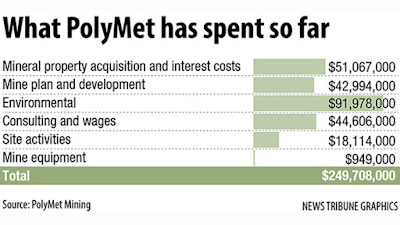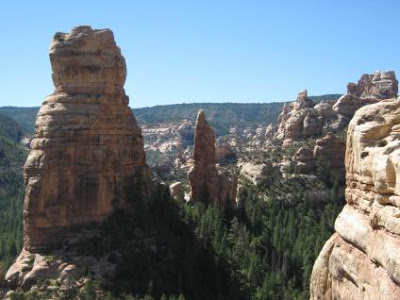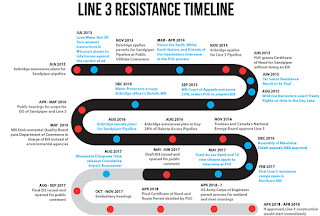Archive for the ‘Sierra Club’ Category
The Trump administration is considering a rule change to something called “the blanket rule.” According to the article, it’s “probably an esoteric issue to most Americans, but to landowners and businesses, primarily in the Western U.S., the ‘blanket’ extension of ESA protections to “threatened” species has punished them for decades. A ‘take’ of a protected species can bring massive civil and criminal penalties. ‘Private property owners’ incentives are key because most endangered species depend on private land for most of their habitat,’ Wood said. ‘This reform will improve those incentives and make it easier for states, property owners, and environmentalists to work together on innovative conservation plans.’ The U.S. Fish and Wildlife Service extended “take” protections to species listed as ‘threatened’ under the ESA, despite Congress wanting federal agents to regulate “threatened” species different from those classified as ‘endangered.'”
When the ESA was enacted, Congress’s intent was to protect endangered species, which is defined as “any species in danger of extinction.” Meanwhile, threatened species are defined as “on the brink of becoming endangered.”
Its provisions give the Interior Department the power to determine what species are endangered and then to list them publicly. It makes it illegal to capture, kill, transport, sell, buy, possess, import or export any of the listed plants or animals. There is a separate category for “threatened” species, those organisms that are on the brink of becoming endangered. They are equally protected, except that scientists may take specimens when necessary for vital research.
In the United States the Office of Endangered Species currently lists 51 plants and 143 animals as endangered and 7 plants and 38 animals as threatened. To prevent the import or trade of endangered species native to foreign countries, the office lists 402 foreign animals as endangered and 16 animals and a plant as threatened.
The goal of the ESA is to properly manage plant and animal species so they’re no longer endangered or threatened.
Here in Minnesota, the ESA was critical in turning around the timber wolf population. At one point (the late 1960s and early 1970s), only a few families of timber wolves existed in Minnesota. After proper management, the timber wolf population, through cautious management, was rejuvenated to the point where there were open hunting seasons on the great grey wolf. That’s a legitimate success story. That should be the goal of management policies for all endangered or threatened species.
Instead, the ESA has been used as a weapon against developers. It’s time to de-weaponized the ESA and return sanity to development projects. That will be a difficult task. Environmental activist organizations like the Sierra Club, Conservation Minnesota and others have used the ESA to throttle projects. They won’t give up without a lengthy court fight.
Rejecting the blanket rule won’t fix the law but it’s a positive first step.
Friday morning, the Minnesota Department of Natural Resources “released a draft permit to mine Friday morning for PolyMet Mining” in what’s being called “a major step forward for what’s poised to be the first copper-nickel mine in the state.” While this isn’t the final step needed to mine, “the draft permit, which includes conditions the state would place on the Canadian mining company, signals the state is comfortable the mine, as proposed, can meet environmental standards and provide significant financial assurances to pay for any needed mine cleanup.”
While that’s a major step forward, the project still faces additional hurdles before construction can start. The next step allows the public “to weigh in on the draft permit, including at two public hearings scheduled Feb. 7 in Aurora, on the Iron Range, and Feb. 8 in Duluth. The DNR will also accept formal objections and petitions for special contested case hearings on the permit before a state administrative law judge.” After that, the MPCA “also plans to release draft water quality and air quality permits, two additional major permits PolyMet needs to obtain before it could open its proposed mine and processing plant near Babbitt and Hoyt Lakes.” That still isn’t enough to open the mine:
Environmental groups have already filed four lawsuits, most challenging a proposed land exchange with the U.S. Forest Service, and more suits are expected if the state eventually grants PolyMet permits. If the DNR calls for evidentiary hearings before an administrative law judge to gather testimony on aspects of the mining plan that are disputed by environmental groups and Indian tribes, that could tack on another 6 to 9 months to the regulatory process.
A vote for a DFL governor is a vote for continuing the status quo. In this instance, this process started in 2004 with the “Initial Environmental Review.”
According to this article, which was written on “Dec. 16, 2015”, PolyMet spent $249,708,000 in its attempt to get the mine operational:
Anyone that thinks spending $250,000,000 is reasonable to get approval for a mine hates mining and miners. The DFL and their front groups (think Sierra Club, Conservation Minnesota and Campaign to Save the Boundary Waters) might think that’s reasonable but sane people don’t. If anyone wants to know why entrepreneurs are leaving Minnesota, the regulatory climate is a major reason. There’s nothing reasonable about it.
Technorati: PolyMet, MPCA, EIS, Permitting Process, Sierra Club, Campaign to Save the Boundary Waters, Conservation Minnesota, Regulations, Lawsuits, DFL
Cindy Whitehair’s LTE is a great example of how special interests have shown the difference in perspectives between how locals see the environment and how special interests see things.
This point is especially driven home when Ms. Whitehair said “There are indeed uses that are allowed in a national forest (for example) that are not allowed in a national monument. One such use is the local tribes’ ability to practice their religion freely. Many of the lands that were swallowed up by President Obama’s Bears Ears designation are sacred tribal lands that are used by local Navajo tribes for religious ceremonies and their access to those sacred lands was cut off when the lands went from a national forest designation to a national monument designation.”
I’m confident that DC special interest organizations know this but haven’t said anything about that the average person who isn’t a local isn’t aware of. It’s a big difference. There’s a policy difference that comes from this, too. Because locals know about these nuances, they’re best equipped to influence how the land is used. There’s no question that the Sierra Club and other national special interest groups were thrilled with President Obama’s unilateral declaration. Ryan Zinke, President Trump’s Interior Secretary, though, took time to travel to Utah to actually talk with residents.
The Trump administration’s decision was made by the federal government but it was made based on the input of locals. The Obama administration’s decision wasn’t made with input of locals. The quality of the decisions is enormously different. Secretary Zinke’s op-ed explains why they did what they did:
Bears Ears National Monument will be modified to create two units: the Indian Creek Unit and the Shash Jáa units. Between these two units, which will now span over 200,000 acres of federal land, the proclamation continues to protect important objects, from the Bears Ears buttes and headwaters, Moon House Ruin, and Doll House Ruin, to unique paleontological resources and areas sacred to Native Americans. The Grand Staircase-Escalante National Monument will be modified to consist of three smaller units known as the Grand Staircase, Kaiparowits, and Escalante Canyons units.
Why wouldn’t we want locals having input into the use of lands as beautiful as this?
Ms. Whitehair answers that question in this paragraph:
While that is not all bad, these special interest groups were not acting from a stewardship standpoint (as the local Navajo actually are).These special interest groups did not want to listen to the local tribes who were opposed to the designation or to the residents who were concerned about the impact to an already fragile local economy.(Utah’s main economic generator is tourism and if you can’t get into these wild areas, why go to those counties?)
Congress should modify the Antiquities Act by requiring greater local public input into these decisions and by requiring an individual act of Congress to create a national monument over a certain size. That way, individuals have a greater input and special interests from 1,000 miles away have little input.
Technorati: Bears Ears National Monument, Antiquities Act, Donald Trump, Ryan Zinke, Local Input, Interior Department, Native Americans, Special Interests, Barack Obama, Sierra Club
After last week’s fiasco in Duluth, in which protestors shut down public testimony on the Enbridge Line 3 Pipeline project, St. Cloud officials exercised caution for Thursday’s planned testimony for the Public Utilities Commission. In the end, Mayor Kleis opted to not hold the hearing. That means the anti-pipeline protestors have won a victory just by threatening a hearing.
St. Cloud Mayor Kleis explained his thinking for shutting down the event, saying “Based on the size of the event and some of the challenges at previous meetings, there’s a cost. The costs have to be met and a plan needs to be in place that meets the public safety needs based on the assessment that our police give us. For Thursday night, based on the crowd (expected) and other use of the facility, the venue would be problematic unless they can meet those demands. It’s their choice to make, but we need to make sure the public and taxpayers are safe.”
Minnesota Petroleum Council Executive Director Erin Roth issued a statement Wednesday night, saying “There’s no doubt that today’s decision to cancel the public meeting on Line 3 is disappointing. What’s worse is that communities are put in this position by highly coordinated protest activities that actively obstruct civil discourse, stifle free speech, and disrespect those in attendance who are there to respectfully voice their opinion. Minnesotans deserve an open and transparent process that examines this important infrastructure project and the benefits that would come from it.”
Last week, anti-pipeline thugs stopped a public hearing in Duluth’s Entertainment & Convention Center, aka the DECC. (I wrote about that event here.) These thugs’ intent is to silence anyone who doesn’t agree with them. This paragraph sums everything up perfectly:
Proponents say the line is an essential piece of infrastructure for petroleum shippers and refineries in the region. Opponents say the pipeline won’t benefit Minnesota, and that it threatens Minnesota’s watershed and the Mississippi River headwaters.
I’ve heard the environmental terrorists’ predictions for 40+ years. They’ve been off by incredible amounts each time they’ve made a prediction. When the Sierra Club opposed the Alaskan Pipeline, the Sierra Club said that North Slope and Prudhoe Bay would pump oil for 4-5 years. The pipeline opened in 1977. It’s still transporting oil in 2017.
Here’s what the approval process has looked like for Enbridge:
Everything is wrong with that picture.
This article highlights the fact that environmental activists aren’t trustworthy. For years, we’ve heard activists from the Sierra Club, Conservation Minnesota and Friends of the Boundary Waters tell us that the sulfur embedded within the copper deposits will stunt the growth of wild rice while poisoning the water.
Pro-mining people questioned the environmental activists’ claims throughout. We’re finding out why the pro-mining people were skeptical. First, before getting into that, I wrote about a University of Minnesota study on wild rice growth a couple years ago. The study reported that rice growth was stunted except when there was a high concentration of iron in the water. The study found that iron mitigated the damage sulfur caused to the rice.
I said back then that there was a pretty high probability that water flowing through the Iron Range would have high concentrations of iron in it. Back then, I quoted from an LTE that said “In 2013 the state hired the University of Minnesota to do a scientific study of the effects of sulfates on wild rice and to determine what the standard should be. Also the Minnesota chamber hired an independent laboratory to do the same. Both studies agree that sulfate is not toxic to wild rice. The studies also found that if sulfates turn to sulfides it does slow the growth of wild rice. However if there is iron present in the water, iron combines with the sulfides and doesn’t allow the sulfides to affect the wild rice.”
This picture is worth thousands of words of anti-mining spin:
The caption reads “A Picture Worth a Thousand Words: Much has been written lately about how sulfate discharges from mines may stunt wild rice growth. Here is a photo of wild rice on Birch Lake (Dunka Bay) ‘stunted’ by sulfate discharges in the Dunka River from the Dunka and Northshore mines. Why are new studies needed when actual results already exist? Photo by Pete Pastika.” Good question, Pete. Personally, I think the time for studies is over. The time for Minnesota to approve the final permits is now.
Technorati: Sulfide Mining, Conservation Minnesota, Friends of the Boundary Waters, Sierra Club, PolyMet
Thank God for President Trump’s regulators. After years of neglecting the riff-raff that serve as regulators, President Trump is installing a new breed of regulator. I’m certain it’s a shock to the environmental activists who’ve ruled the roost the last generation. That’s why it’s essential to clean out the barn and install new regulators that believe in the rule of law and the Constitution.
One of the people who’s likely to be a new regulator is a Wyoming woman named Karen Budd-Falen. It’s likely that she’ll be “the next leader of the Bureau of Land Management.” According to the article, “Budd-Falen has worked extensively for private property owners, agricultural operations and local governments.” Trent Loos, a Nebraska rancher and the host of a radio show Rural Route, said of Budd-Falen “There’s no doubt why people who oppose multiple use and following the law as it’s written would be opposed to Karen Budd-Falen. She believes in the Constitution the way it was written that guarantees multiple use. Not just rancher use but multiple use.”
Later, Loos said “It’s important to point out that she was railing on the BLM when (the Obama Administration was) against multiple use. That’s why she was raising a stink. We’ve had administrations moving away from multiple use not maintaining it. That’s why she went after the BLM so many times.”
That’s why we should expect lots of theatrics by the Democrats. Think of her as a tough-as-nails female version of Scott Pruitt. Needless to say, environmental activists are freaking out:
“This is probably one of the worst picks he could possibly come up with to head the BLM,” explained Athan Manuel, director of the Sierra Club’s Lands Protection Program. “She’s very ideological, and does seem to be completely offended by the concept of federal lands,” he added.
What’s funny is that the Sierra Club is upset that Budd-Falen is using the same tools that environmental activists have used against power companies:
But Budd-Falen’s approach was to destroy Ratner and Western Watersheds through this nuisance lawsuit accusing him of trespassing. She hardly even tried to hide her intentions, reportedly bragging in 2015 to a group of ranchers that “one of the funniest things I’m doing right now” is that she “figured out a way to sue Western Watersheds Project.”
How is that different than MCEA suing the investors of the Big Stone II power plant? Back then, Paul Aasen bragged about his tactics:
Along with our allies at the Izaak Walton League of America, the Union of Concerned Scientists and Wind on the Wires, the Minnesota Center for Environmental Advocacy and Fresh Energy argued, first in South Dakota, then before the Minnesota Public Utilities Commission (PUC), that the new plant was a bad idea. Our message was simple: The utilities had not proven the need for the energy, and what energy they did need could be acquired less expensively through energy efficiency and wind.
We kept losing, but a funny thing happened. With each passing year, it became clearer that we were right. In 2007, two of the Minnesota utilities dropped out, citing some of the same points we had been making. The remaining utilities had to go through the process again with a scaled-down 580-megawatt plant.
These environmental parasites don’t care about the environment. They care exclusively about their extremist agenda.
They’re just upset that someone’s using their tactics against them.
If people needed a better example of how hostile the Dayton administration is to robust economic growth, they needn’t look further than Gov. Dayton’s Commerce Department. When Gov. Dayton’s Commerce Department testified that the Enbridge Line 3 Pipeline wasn’t needed, they testified that they were anti-commerce. When the Commerce Department testified to that, the DFL quietly applauded. They knew that it essentially killed approval of that pipeline’s replacement at least through the end of Gov. Dayton’s administration.
Listen to the certainty of the Commerce Department statement. They said “‘In light of the serious risks and effects on the natural and socioeconomic environments of the existing Line 3 and the limited benefit that the existing Line 3 provides to Minnesota refineries, it is reasonable to conclude that Minnesota would be better off if Enbridge proposed to cease operations of the existing Line 3, without any new pipeline being built,’ the agency wrote in testimony submitted to the Public Utilities Commission on Monday, Sept. 11.”
In the next paragraph of the article, it states “The testimony, written by Kate O’Connell, manager of the Energy Regulation and Planning Unit of the Department of Commerce, comes ahead of evidentiary hearings on the oil pipeline replacement that will see the project debated in a trial-like setting in November. A new round of public hearings across the state will kick off at the end of the month.”
It’s time to ask a foundational question. Shouldn’t Minnesotans to expect the state government’s Commerce Department to be pro-commerce? There’s no question that the Dayton/DFL Commerce Department isn’t pro-commerce. Ms. O’Connell’s testimony settled that matter.
Here’s another foundational question Minnesotans should ask: who should have the final say on multi-billion dollar projects? Why should the Public Utilities Commission and the Commerce Department have the final say on whether projects should be approved? Further, what makes the Commerce Department and the PUC experts on things like public safety and transportation?
Those are the only things that government should be involved in. When Gov. Dayton’s Commerce Department testified that there wasn’t a need, they didn’t testify as to whether their testimony hurt public safety. It does from the standpoint of forcing more oil onto oil trains. More oil on more oil trains is already causing cities through which these railroad tracks run to come up with evacuation plans. That costs each of those cities tons of money in their annual operating budget. That, in turn, leads to higher property or sales taxes.
This is a multi-part series. This is a subject that’s too important not to examine in depth.
Technorati: Commerce Department, Mark Dayton, Enbridge Line 3 Pipeline, Public Utilities Commission, Kate O’Connell, DFL, Public Safety, Transportation, Property Taxes, Oil Trains
Saying that MEP, aka Minnesota Environmental Partnership, is dishonest and biased when it comes to fossil fuels is understatement. In their statement about the Dayton Department of Commerce testimony to the Public Utilities Commission, Steve Morse, MEP’s Executive Director, admitted that MEP hates fossil fuels.
He admitted it when he said “The age of growth in fossil fuel demand is over. We don’t need increased fossil fuel capacity. Instead, We need to get about the business of abandoning and cleaning up the existing Line 3.” That’s a pretty stunning statement, especially considering the fact that natural gas will be needed for at least three-fourths of this century to replace coal-fired power plants for baseline energy generation.
In MEP’s official statement, Morse also said “We commend the Department of Commerce for taking a hard look at the data and carefully considering the criteria that are in law for this type of project. The Department found that this pipeline is not needed for Minnesota, that it does not benefit Minnesota, and is not good for Minnesota.”
That’s a narrow-minded view of things. First, legislators from northwest Minnesota have criticized the Minnesota Department of Commerce for their narrow-minded perspective:
“Gov. Mark Dayton’s administration is ‘siding with environmental extremism instead of common sense.’ ‘Shutting down this pipeline will have a substantial impact on rural Minnesota’, Fabian said in the statement. ‘Our local counties, school districts and townships will lose critical property tax revenue, and what’s more, jobs will be affected and there will be fewer workers patronizing local businesses like our grocery stores and motels. Plain and simple, bureaucrats in St. Paul are advancing policies that hurt Greater Minnesota.’”
Friday night on Almanac, Steve Morse debated Cam Winton on the merits of the pipeline. The arguments made by Steve Morse weren’t totally without merit. They weren’t the least bit persuasive, either. I’ve been watching environmentalists for 40+ years. In that time, their statistics and ‘facts’ have been consistently inaccurate. The notion that we’re starting to use less fossil fuels is preposterous. Yes, we’re driving more fuel efficient cars. Yes, car manufacturers are manufacturing more hybrids. No, society isn’t reducing the amount of gasoline we’re using. Watch the video of the interview, which starts approximately 5 minutes in:
Technorati: Steve Morse, Minnesota Environmental Partnership, Mark Dayton, Minnesota Department of Commerce, Minnesota Public Utilities Commission, Special Interests, DFL, Cam Winton, Chamber of Commerce, Enbridge Line 3 Pipeline
Rep. Dan Fabian and Sen. Mark Johnson didn’t mince words in their criticism of Gov. Dayton on his administration’s ruling that the pipeline isn’t needed.
In the opening paragraph of the article, it says the “Department of Commerce’s recent analysis that an Enbridge pipeline project is unnecessary defies common sense, northwest Minnesota legislators said this week.” Then it gets into specifics, saying “Gov. Mark Dayton’s administration is ‘siding with environmental extremism instead of common sense.’ ‘Shutting down this pipeline will have a substantial impact on rural Minnesota’, Fabian said in the statement. ‘Our local counties, school districts and townships will lose critical property tax revenue, and what’s more, jobs will be affected and there will be fewer workers patronizing local businesses like our grocery stores and motels. Plain and simple, bureaucrats in St. Paul are advancing policies that hurt Greater Minnesota.'”
That’s the heart of the matter. The DFL is ruled by environmental extremists who want to totally eliminate the use of fossil fuels. I know that sounds paranoid but it’s based on what the Sierra Club has said publicly. The Sierra Club is even opposed to natural gas:
If drillers can’t extract natural gas without destroying landscapes and endangering the health of families, then we should not drill for natural gas.
There isn’t much difference between the Dayton administration saying that we don’t need pipelines because our need for oil “isn’t likely to increase over the long-term” and the Sierra Club insisting that natural gas isn’t clean. Neither statement is credible.
The Sierra Club’s hands aren’t clean, either:
Then there’s this:
“I am frustrated the Dayton administration and Department of Commerce are once again dragging their feet on this project and throwing roadblock after roadblock in the way of this critical pipeline replacement,” Johnson said in the statement. “It seems they are more interested in working for special interests instead of supporting citizens, industry and good-paying jobs.”
In late August, Johnson, Fabian, Rep. Deb Kiel, R-Crookston, and 50 other state legislators signed a letter of support for the project. “The Department of Commerce’s recommendation to shut down and not replace Enbridge Line 3 is another example of policymakers in St. Paul ignoring common sense and the priorities of Greater Minnesota,” Kiel said in a statement Thursday. “It’s time the Dayton Administration put the people of Minnesota first instead of special interests.”
If the DFL wants to know why they lost the rural vote and is losing ground on the labor vote, this article explains it pretty well. You can’t be pro-laborer while opposing the projects that employ those unionists. The DFL has done a masterful job — if their goal was to alienate construction unions.
Technorati: Dan Fabian, Mark Johnson, Deb Kiel, Enbridge Pipeline Project, Farmers, Construction Unions, Republicans, Mark Dayton, Special Interests, Sierra Club, Fossil Fuels, Natural Gas, Department of Commerce, Mike Rothman, DFL
If there’s anything certain besides death and taxes, it’s that environmental activists will fight against each energy infrastructure project in Minnesota. Enbridge’s Line3 is a perfect example of that. At the behest of his allies in the environmental activist community, Gov. Dayton is dragging his feet rather than approving the construction of the Line3 replacement pipeline. In a statement published on August 9, 2017, Gov. Dayton said “In order to provide the Public Utilities Commission (PUC) with the best possible information on which to base its decision, I have directed the Commissioner of Commerce to extend the deadline for publishing its Environmental Impact Statement (EIS) for Enbridge’s proposed Line 3 Oil Pipeline. According to my order, the Minnesota Department of Commerce will publish its final EIS on Thursday, August 17, 2017, including its responses to the more than 2,860 public comments the Department has received.”
That pipeline EIS must’ve slipped because legislators along the pipeline’s projected path wrote a letter to Gov. Dayton. According to the article, “In a letter to Minnesota Governor Mark Dayton and Commissioner Michael Rothman on Aug. 24, a request was made to move the proposed $3 billion Line 3 Replacement Project forward with no further delays. It was signed by 35 state legislatures, including District 10B Representative Dale Lueck, covering all of Aitkin County and part of Crow Wing County.”
Further, it says “The Department of Commerce held 49 public meetings since Enbridge applied for the Line 3 Replacement project in April 2015. In September and October of 2017, another public comment period will take place with 18 more meetings. In addition, Enbridge held more than 1,200 open houses and question-answer sessions along the project’s preferred route, the existing right-of-way, the alternative routes and in the Twin Cities since 2013.”
Clearly, Gov. Dayton and the Public Utilities Commission aren’t acting in the public’s interest. They’ve morphed into puppets doing the Sierra Club’s and MCEA’s bidding. State Rep. Steve Green called out the DFL and the environmental activists in this LTE:
This pipeline shouldn’t be controversial, but Democrats are protesting the project claiming that it is bad for the environment. The problem is, replacing the pipeline is the best thing to do to protect our environment and citizens. If the existing pipe is allowed to corrode, the oil being transported in that pipe is at a greater risk of escaping into the surrounding land. What is more, transporting oil through a pipeline is far safer than transporting by rail.
This video shows the fight that’s continuing:
In the description is this information:
Indigenous Land Defenders from the Urban Warrior Alliance take direct action at an Enbridge pipeline stockpile near Morden Manitoba. 05/06/17 #NoEnbridge #NoPipelines
Let’s be clear about something. Environmental activists have fought every fossil fuel project in Minnesota for a generation. This isn’t just about the environment. It’s about stifling productivity, efficiency and endangering public safety.
Environutters have been with us essentially all my life and probably longer. Right now, energy experts tell us that the United States is becoming “energy dominant.” At that same point in history, environmental activists are becoming more militant towards pipeline projects.
That begs this question: which side are they on? Keep that question in mind the next time you step into a voting booth. The size of your heating bill depends on it.
Technorati: Enbridge Line 3 Pipeline, Infrastructure, Minnesota Department of Commerce, Public Utilities Commission, Mark Dayton, Environmental Activists, Indigenous Land Defenders, Public Safety, Environmental Impact Study, DFL





